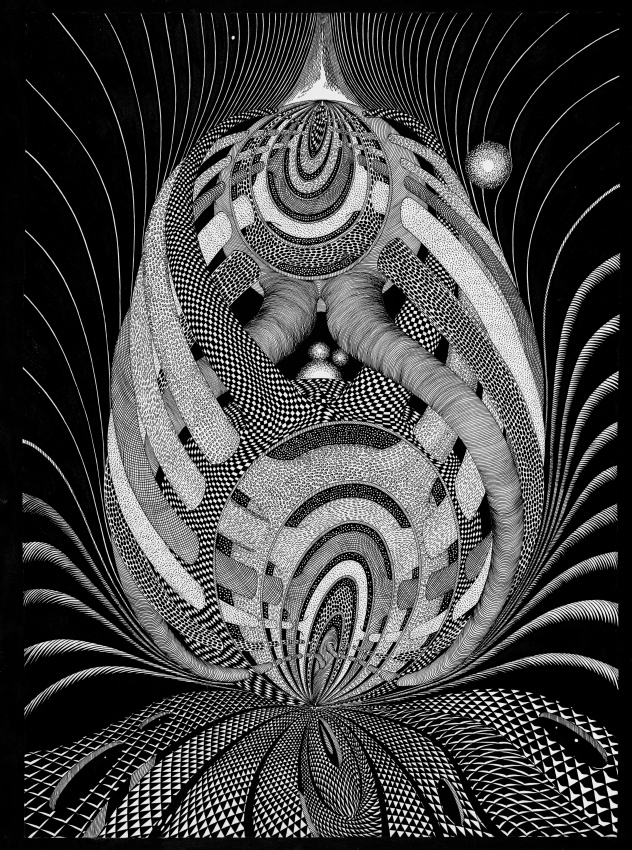Deformation of the Riemann surface of an algebraic function
No. 229, 1983
(Theory of algebraic functions)
India ink on paper, 44x62 cm.
Underlying this twisted deformation of space, where long tubes intertwine to weave a tortuous egg-like shape, is a certain three- dimensional model. The model shows a deformation of a Riemann surface of a special algebraic function, set in four-dimensional Euclidean space. This surface is also considered to be homeomorphic to a two- dimensional sphere with one handle as well as a two-dimensional torus. In terms of the theory of algebraic functions, we can construct this kind of Riemann surface by taking two copies of a two-dimensional sphere, making two cuts on each, and then gluing the corresponding cuts together. What we obtain is a torus, or donut-like object, represented as two spheres joined together by two tube-like cylinders (which are shown in this image). A curious feature of this form is that if we deform the underlying function, a polynomial, such that its roots coalesce, then so too does the corresponding Riemann surface follow. Vanishing cycles appear, singular points arise, and the surface loses its smoothness. In this image, two roots seek to coalesce into one, and, as a result, the upper sphere gets smaller while the lower one grows larger, a process somewhat visible through the object's cut-away sections.
